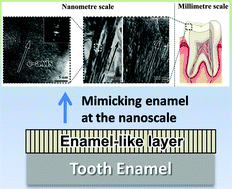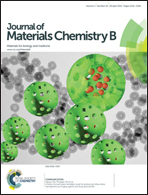Amelogenin and enamel biomimetics
Abstract
Mature tooth enamel is acellular and does not regenerate itself. Developing technologies that rebuild tooth enamel and preserve tooth structure is therefore of great interest. Considering the importance of amelogenin protein in dental enamel formation, its ability to control apatite mineralization in vitro, and its potential to be applied in fabrication of future bio-inspired dental material this review focuses on two major subjects: amelogenin and enamel biomimetics. We review the most recent findings on amelogenin secondary and tertiary structural properties with a focus on its interactions with different targets including other enamel proteins, apatite mineral, and phospholipids. Following a brief overview of enamel hierarchical structure and its mechanical properties we will present the state-of-the-art strategies in the biomimetic reconstruction of human enamel.

- This article is part of the themed collection: 2015 Journal of Materials Chemistry B Hot Papers

 Please wait while we load your content...
Please wait while we load your content...